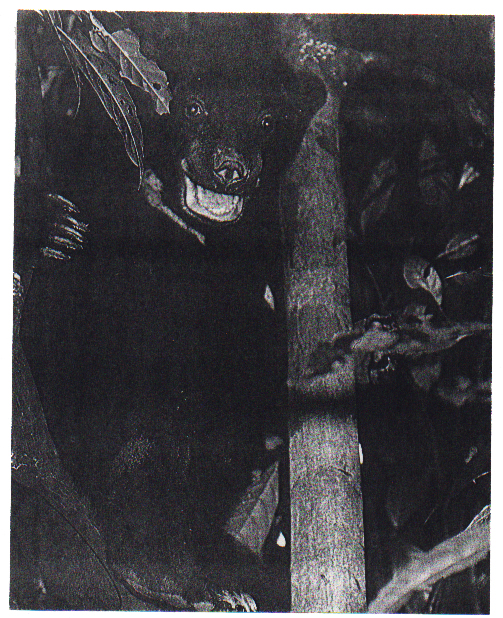 This collection of student work is from Frank Keim's classes. He wants to share these works for others to use as an example of culturally-based curriculum and documentation. These documents have been OCR-scanned and are available for educational use only.
This collection of student work is from Frank Keim's classes. He wants to share these works for others to use as an example of culturally-based curriculum and documentation. These documents have been OCR-scanned and are available for educational use only.Special | A | B | C | D | E | F | G | H | I | J | K | L | M | N | O
P | Q | R | S | T | U | V | W | X | Y | Z | ALL
Sun Bear by Marlene Papp:
SUN BEAR There are two species of bears that occur South of the Equator, the Spectacled bear and the Sun bear. The Sun bear is the world's smallest bear and lives in the remains of the tropical forests of the Malay Peninsula, Java, Sumatra, Burma, and Thailand. The scientific name for the Sun bear is Helarctos malayanus. The Sun bear gets its name from the yellowish crescent on its chest. In some areas of their range, Sun bears are known as Honey bears or Malay bears. They weigh between 60 and 143 pounds. This smallest member of the bear family grows to only about 45 feet in length. Wild Sun bears weigh over 110 pounds. The Sun bear is covered with short, dense, black fur. It lives in the jungles of the tropics. If I traveled through the jungle, when I emerged I would be smeared with dirt and sweat from head to toe. But if a Sun bear went through the jungle the same way, the bear would come out spotless. This is because of the smooth quality of the fur. This sleek animal's muzzle may vary from grayish white to orange in color. It has small, rather beady eyes and small rounded ears. The feet, tipped with long sickle-shaped claws, are sometimes colored with gray and have no hair on their soles. Its short bowlegs give it an ungainly appearance when it walks. Like all other bears, the Sun bear often stands up on its hind legs to get a better view of a distant object or when it encounters a potential enemy. The population of the Sun bear has been greatly decreased by hunting, but the Sun bear still exists in the forests of the Malay Peninsula, Java, Sumatra, Burma, and Thailand. The Sun bears are extinct on the Subcontinent near Bangalore, India. In some parts of Southeast Asia Sun bears have a reputation of being as dangerous as dangerous elephants. The World Wildlife Fund has worked hard in the country of Sabah to save Sun bears from extinction. The Sun bear is considered an endangered species and hunting them is no longer allowed in Malaysia, or anywhere else. But some people still use Sun bear cubs for their pets. Hunters illegally kill the mother and bring the cubs back as pets. Hopefully this practice will soon stop. Marlene Papp Bear Fire Unit 3/17/92 | |
|




